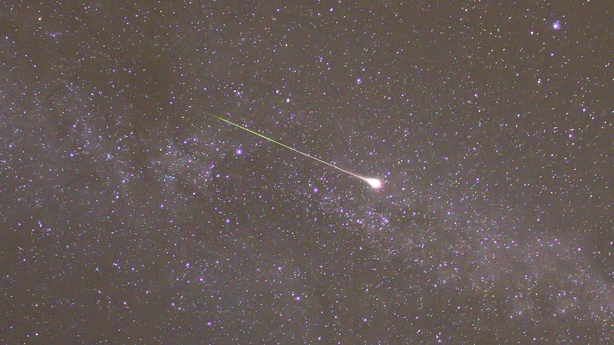Skywatchers may be treated to a celestial fireworks display tonight and over the coming nights, as the annual Perseid meteor shower reaches its peak.
Up to 20 times more shooting stars than normal are expected to be visible during the period, provided it is not cloudy.
Met Éreann's forecast for tonight looks positive for most places, with a risk of some broken cloud, mist and fog in certain areas.
Visibility should also be helped by there being a new moon this week.
According to Astronomy Ireland, the Perseids can be seen anywhere in the sky, and no special equipment is necessary to see them.
The shower lasts all night and should be most easily visible when the sky is dark, between the hours of 10.30pm and 4.30am.
Perseids have been observed for at least 2,000 years and are caused by sand-grain sized piece of dust and ice left over from a comet called Swift-Tuttle which orbits the sun once every 133 years.
Every August the Earth passes through a cloud of debris left behind by the comet and the material then lights up as it crashes into Earth's atmosphere at over 200,000 km/hour.
The maximum period of activity is expected to be visible tonight, with the numbers visible after that declining by half each subsequent night.
Normally around one meteor is visible every 10 minutes, but during the annual period of the Perseid shower, that can rise to one every minute.

"Since the weather in Ireland can be summed up in two words "mostly cloudy" it is very important that Irish people ignore what they hear from other parts of the world about the night of maximum, and remember that there should be excellent displays all this week," said David Moore from Astronomy Ireland.
"If you only watch on the night of maximum there is a chance you will see nothing this year if it is cloudy, whereas, if you go out every night this week and weekend you will almost certainly see some Perseids and beat the weather statistics."
Astronomy Ireland is asking people to count how many meteors they see every 15 minutes during the period, and submit their results to the organisation.
The data will be used to assess whether the shower is getting stronger or weaker over the years, which in turn aids our understanding of the solar system.
The meteor shower coincides with a period where the International Space Station (ISS) should also be clearly visible as it passes through the night sky at particular times.
There are a number of websites, including the Astronomy Ireland one, which publish the exact times at which the ISS can be seen from different locations around the world.
Frances McCarthy from Blackrock Castle Observatory in Co Cork, said that the darker the sky, the more shooting stars will be seen.
The best viewing would be from outside cities, she said, and added that the stars will be better seen after midnight.

